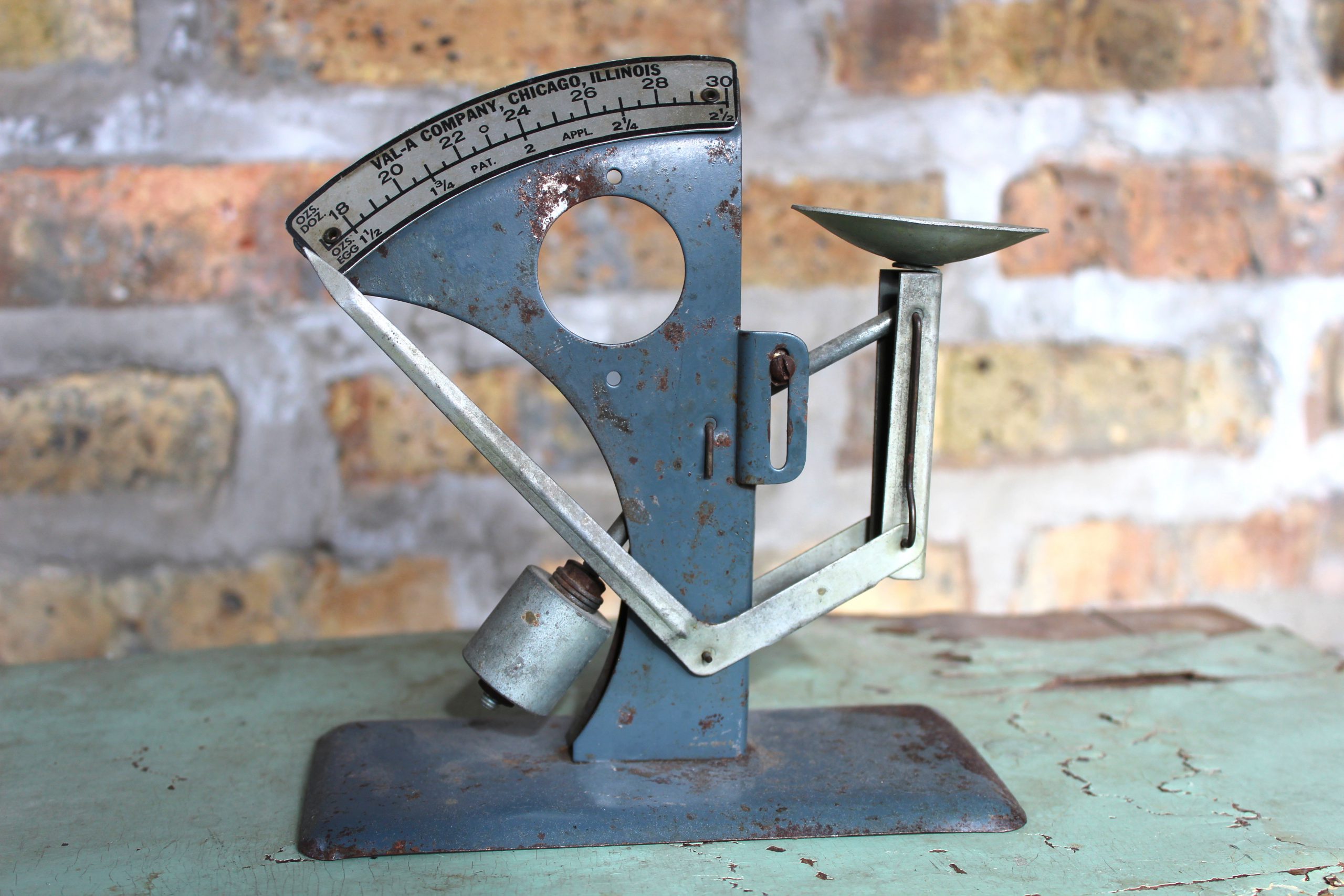
Museum Artifact: VAL-A Egg Scale, c. 1930s
Made By: VAL-A Company, 700 W. Root St., Chicago, IL [Canaryville]
Weighing a hundred eggs one-by-one on a galvanized metal doohickey might seem crazily inefficient, if not entirely unnecessary. But for any humble farmer / chicken coop owner of the early to mid 20th century, egg scales like this one were must-have tools of the trade. Today, they can pass for intriguing modern art pieces.
The VAL-A Company, a South Side staple, started out in 1932 at 3922 S. Wabash Ave before settling into its long term headquarters at 700 W. Root Street (just south of Comiskey Park) in the 1940s. Many people in the agricultural industry were familiar with the company well into the 2000s, but it generally wasn’t for their egg scales. Yes, Val-A sold various poultry-related products (egg washers and “hatchery supplies”), but its main claim to fame were its bottled adhesive products, such as TEHR-GREEZE “Fabric Cement”. That product, according to a 1954 issue of American Feed & Grain, could be used “to patch or repair belting, grain bags, feed bags, burlap, canvas and many other cloth items.”
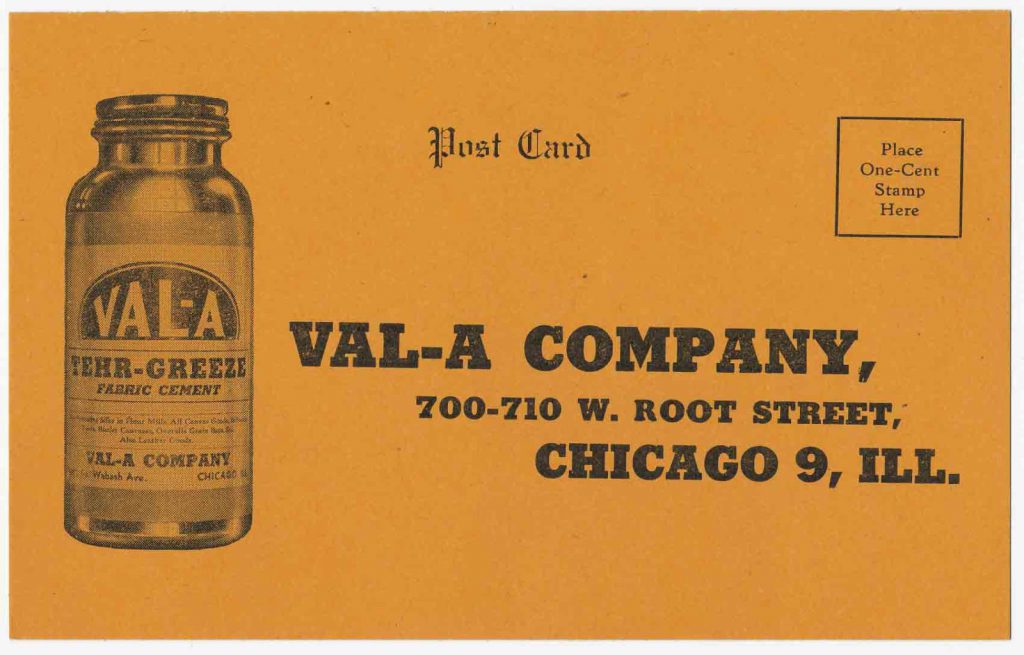
As far as the egg scale industry is concerned, the actual heavy hitters of the period were also largely Midwestern, and included Brower (Quincy, IL), Acme (St. Paul, MN), and the colorful Jiffy-Way (Owatonna, MN). Another popular model, the Mascot Egg Grader out of Minneapolis, is of special interest to this story, because—in all likelihood—Val-A actually contracted out their egg scales to Mascot, and simply arranged to have their own branding on the nameplate. This was—and still is—pretty standard issue procedure for a lot of businesses looking to expand their coverage inside an industry without necessarily expanding their own manufacturing capacity. Can I say for sure that our Val-A scale is a Mascot in disguise? I guess not 100%. But here is a standard Mascot for comparison.
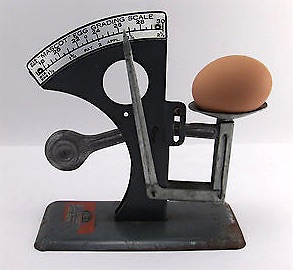 [The design of this Mascot scale, made in Minnesota and not part of our collection, suggests Val-A either outsourced their scale production or copied a template]
[The design of this Mascot scale, made in Minnesota and not part of our collection, suggests Val-A either outsourced their scale production or copied a template]
Whether it was forged in the Val-A factory or not, it’s safe to assume our scale passed through Chicago on its way to whatever chicken commune it wound up serving. Some long-ago Old McDonald likely utilized this precision machine during a time when demand was high and payouts were based on the exact size of the eggs—with extra cash for farmers who pre-graded / organized their own output.
According to Charley Amsbaugh’s book North American Egg Scales: From ABC to Zenith, “During World War I, the U.S. War Department bought chicken eggs in large quantities to feed the troops overseas. The War Department’s use of size classifications—Small, Medium, Large, Extra Large, and Jumbo—to determine the prices to be paid for the eggs created an instant need for egg scales to indicate how much an egg weighs, which is how eggs are classified as to size. During the Great Depression, selling eggs was one of the few sources of cash money for many farm families, and grocery stores and egg processing plants paid a premium for sorted eggs, perpetuating the demand for more and cheaper egg scales. . . . While only a few companies were making egg scales in the early 1920s, many more sprang up through the 1930s and ’40s, and nearly every American family that raised chickens had an egg scale by the 1950s.”
It wasn’t until as recently as the 1970s that automatic egg grading had advanced to a point where old-fashioned, one-by-one egg scales basically became obsolete, shifting devices like ours into pure antique mode.
Anyway, the photo below offers a gander at what Val-A’s old egg stomping grounds at 700 W. Root St. look like today… still standing! The last known inhabitant was a company called Chicken Game & Gourmet, so at least the song has stayed the same.
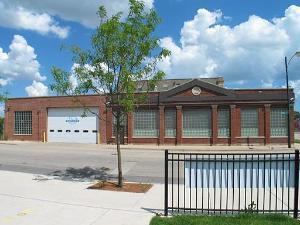 [Former Val-A Company factory at 700 W. Root Street in Canaryville]
[Former Val-A Company factory at 700 W. Root Street in Canaryville]
As for Val-A’s current whereabouts? Well, the company actually soldiered on well into the 21st century, transitioning from poultry to focus more on the adhesives that had advanced their reputation. They moved out of the city to suburban Elmhurst, IL, where they produced “Tear Mender” brand adhesives and sealants. That’s “tear mender” as in “fixing something torn,” not “wiping away your sadness tears,” by the way—although the idea of a sealant for sadness is fascinating. . . .
Anyway. . . business was kicking along until 2014, when Val-A was finally bought out by a St. Louis manufacturing company called Lighthouse For the Blind, which has since moved all Val-A operations down to Missouri, essentially bringing our story to a close.
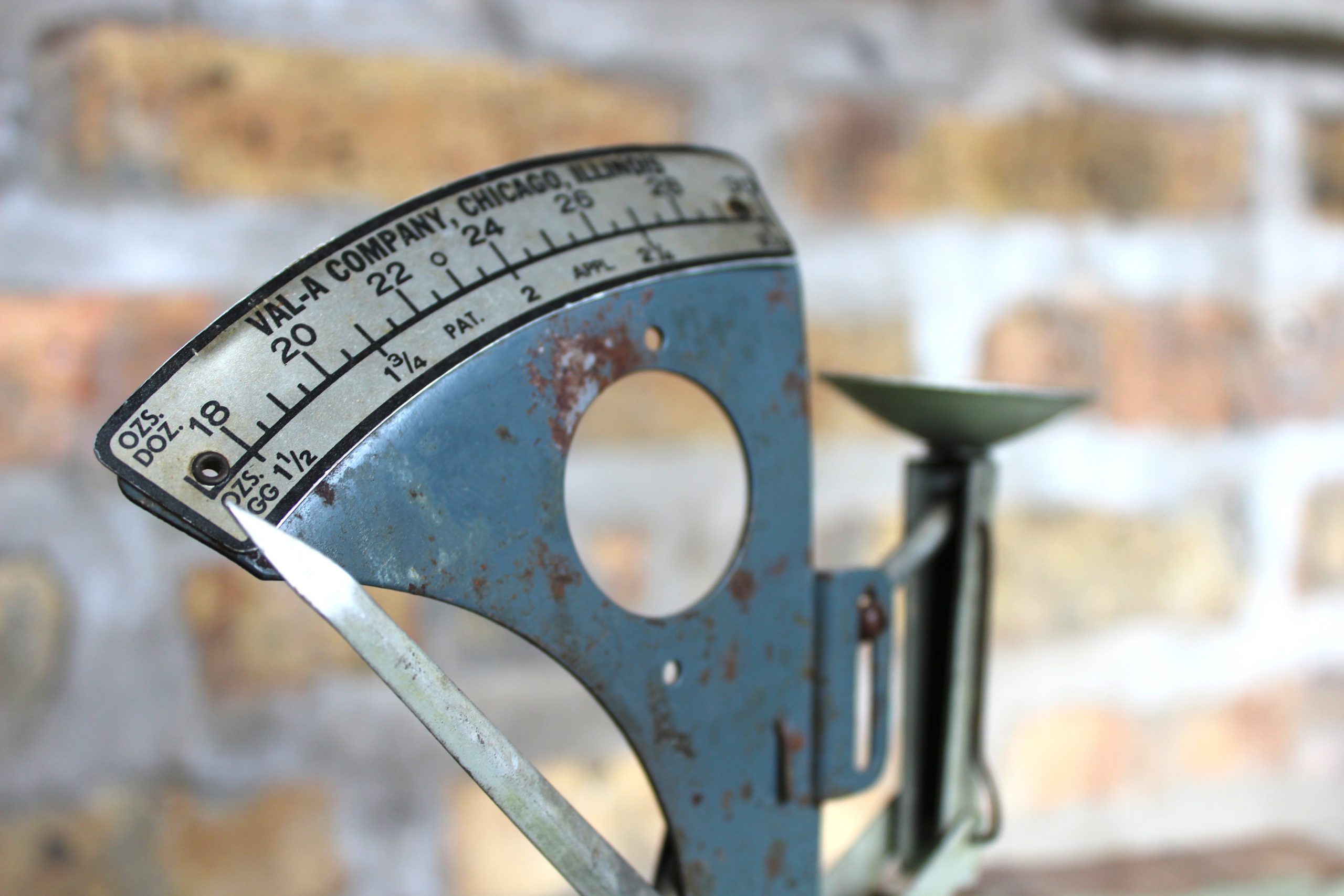
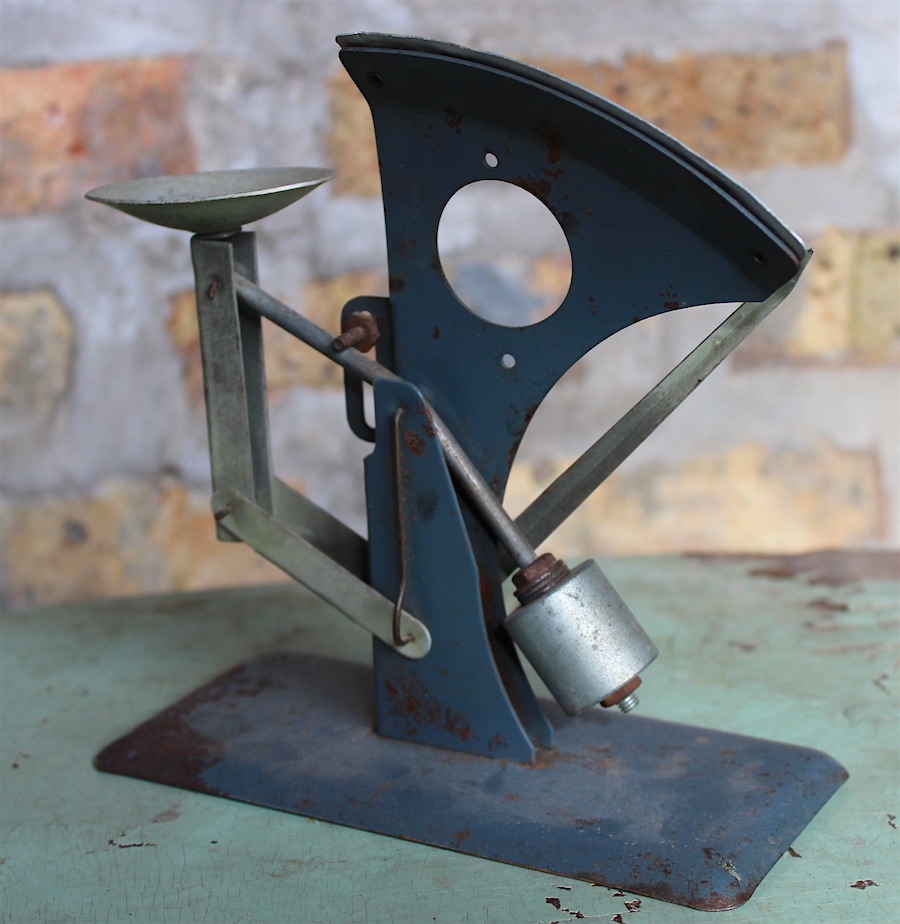
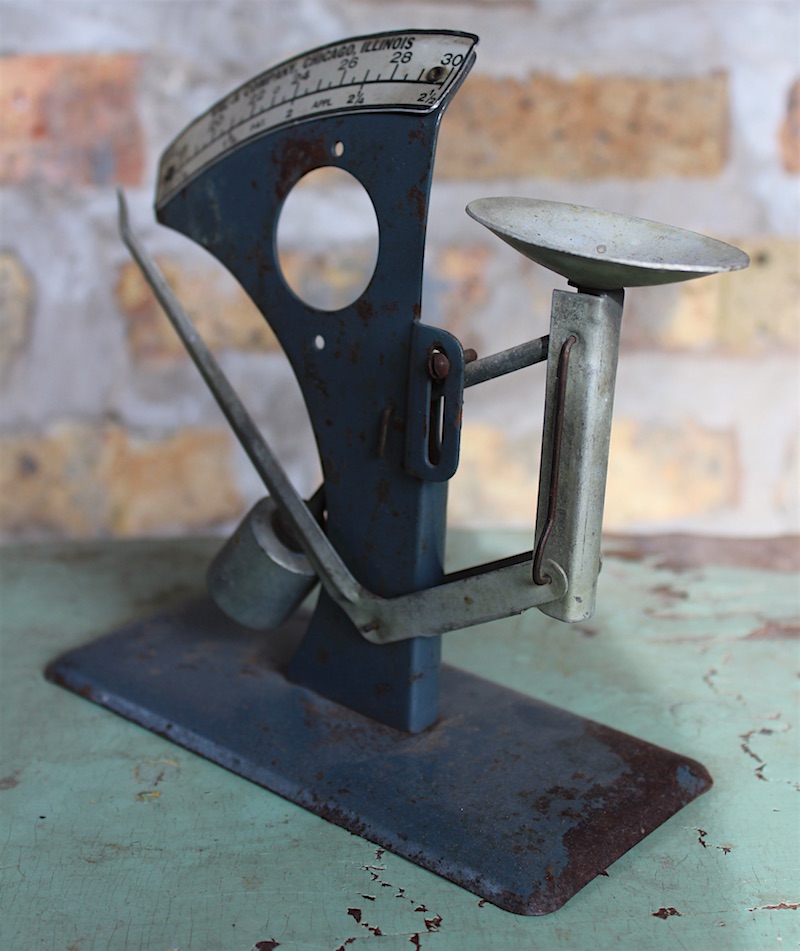
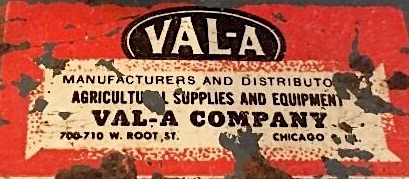

One thought on “VAL-A Company, est. 1932”